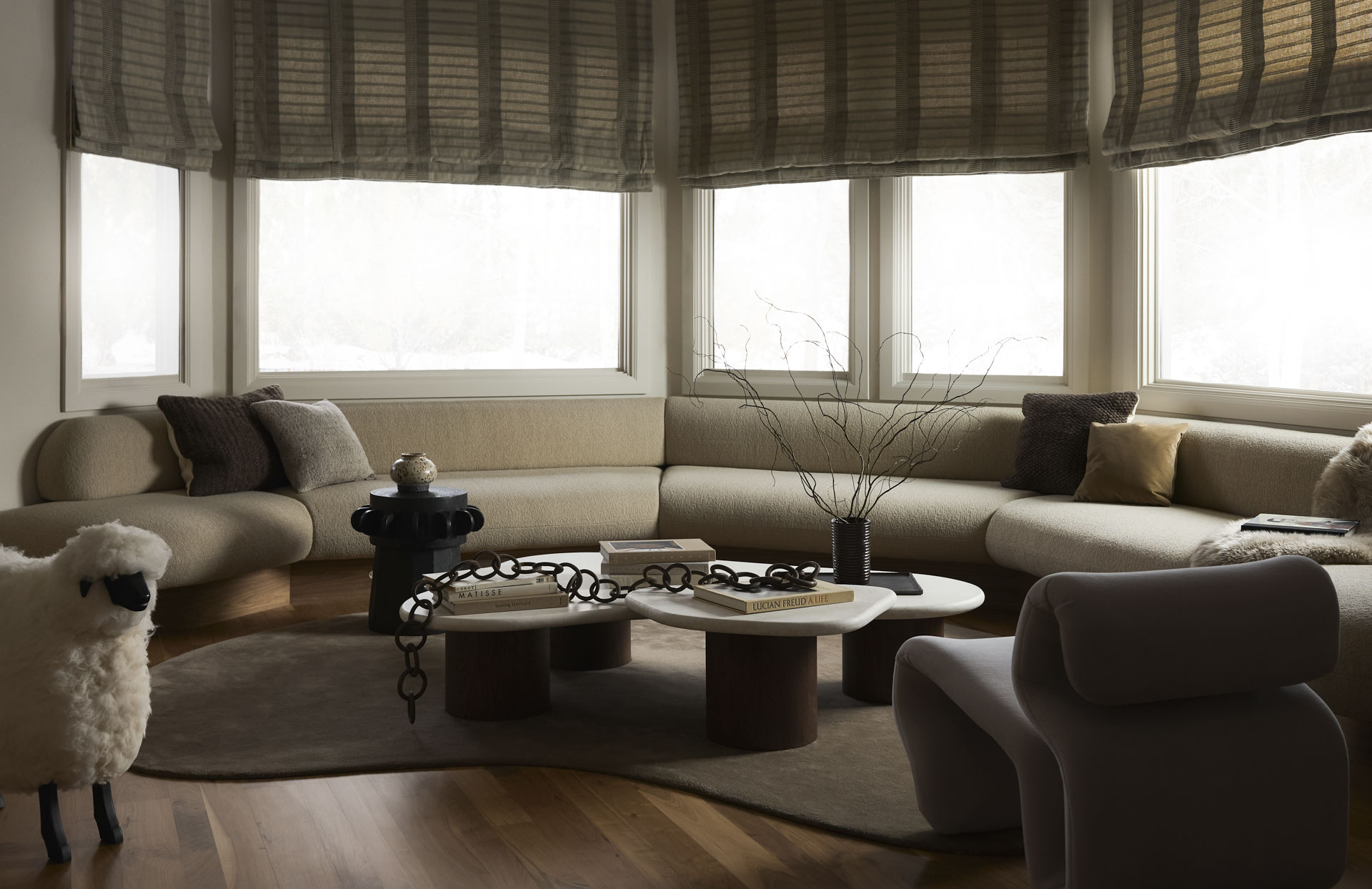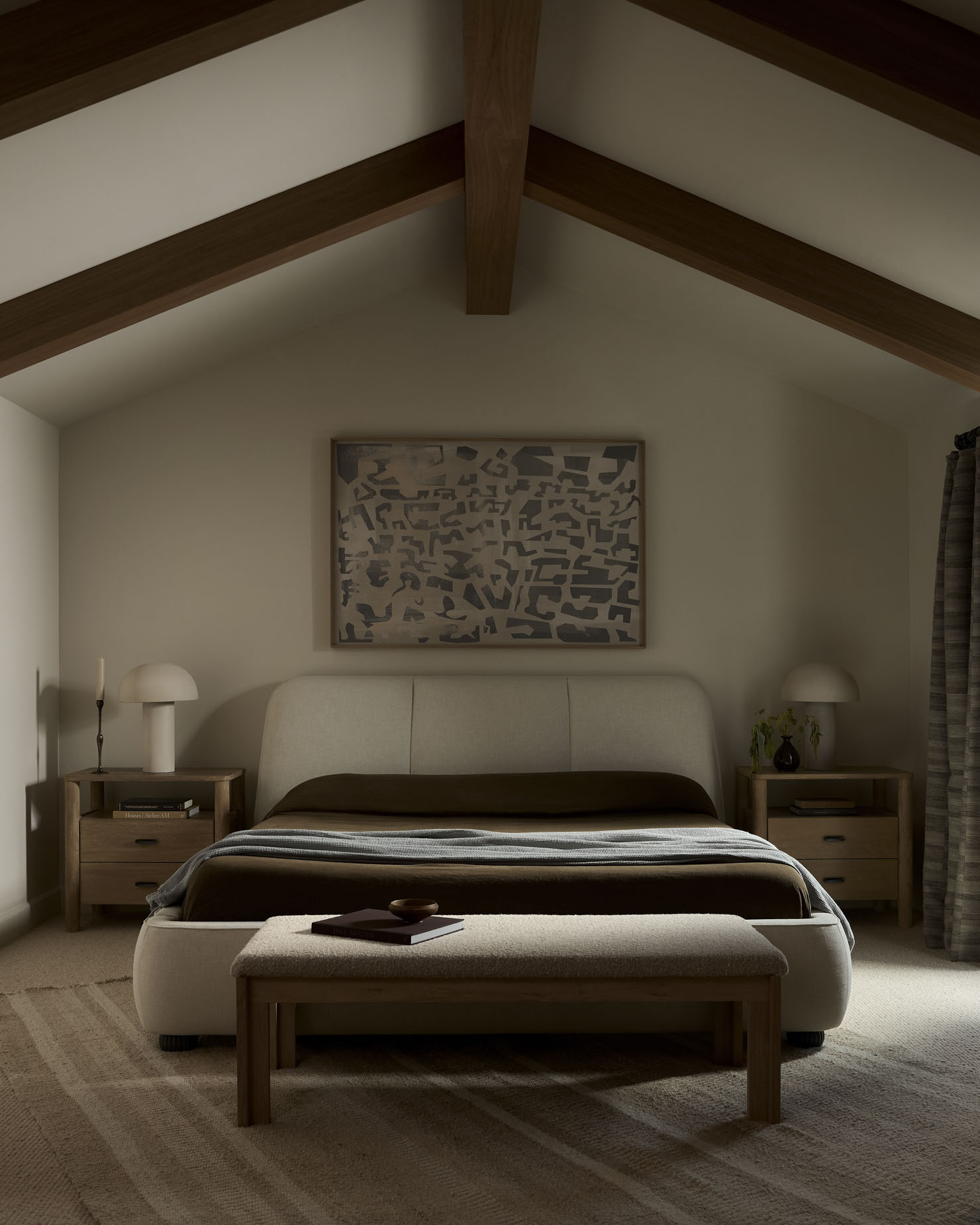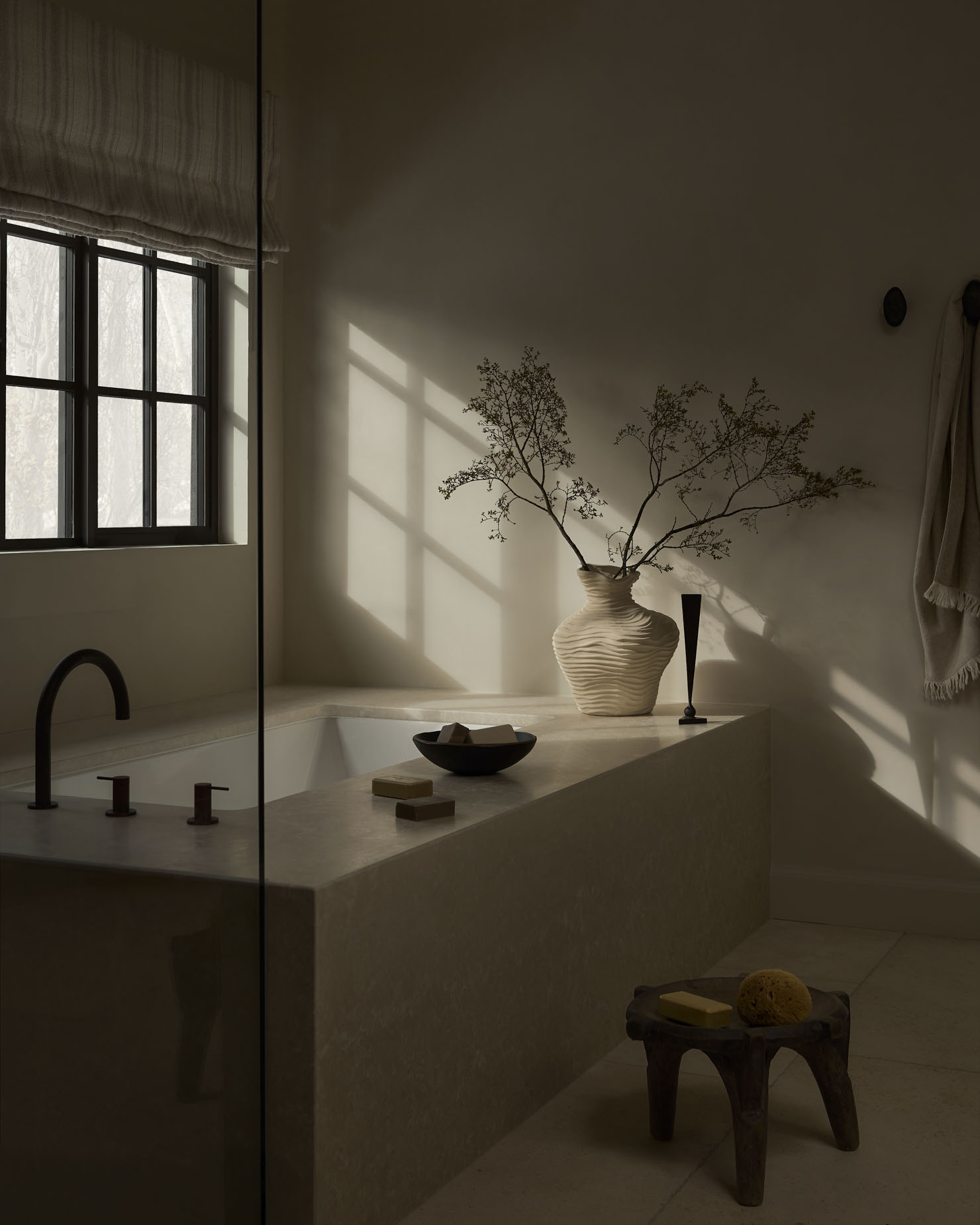Corner House is a minimal home located in Park City, Utah, designed by Susannah Holmberg Studios. In the living room of a Park City mountain house, a custom curved sofa draws the eye like a river stone worn smooth by time. This singular piece, designed by Susannah Holmberg Studios, embodies the delicate balance between comfort and sophistication that defines contemporary residential design. Its sweeping form speaks to both the geological curves of the surrounding Utah landscape and the fluid geometries that have emerged as signatures of twenty-first-century interior architecture.
The sofa’s creation represents more than aesthetic choice – it demonstrates how custom furniture can reshape spatial relationships within domestic environments. By maximizing the living area through its arc-like form, the piece transforms what might have been a conventional seating arrangement into a sculptural anchor that defines the room’s social dynamics. This approach echoes the work of mid-century pioneers like Vladimir Kagan, whose serpentine sofas similarly used curve to create intimacy within open-plan spaces, yet Holmberg’s interpretation feels distinctly contemporary in its restraint.
The material palette throughout the home reveals a sophisticated understanding of texture as narrative device. The original hardwood floors, refinished with a white wash, serve as a bridge between the structure’s 1980s origins and its current incarnation. This treatment – part preservation, part transformation – reflects broader trends in sustainable design practice, where renovation becomes an act of material stewardship rather than wholesale replacement.
Holmberg’s selection of vintage and contemporary pieces creates a dialogue between eras. The Afra and Tobia Scarpa “Monk” dining chairs for Molteni bring Italian design heritage into conversation with Sarah Sherman Samuel’s coffee table, whose clean lines speak to California’s current minimalist movement. These choices demonstrate how successful residential design operates as curatorial practice, assembling objects that share formal DNA while representing different moments in design history.
The kitchen pendants from Lostine and bathroom hardware from Mi&Gei reveal attention to the smaller scales where craft meets daily ritual. Such details – often overlooked in broader design narratives – actually carry tremendous weight in determining how spaces feel and function. They represent the granular decision-making that separates competent design from memorable environments.














